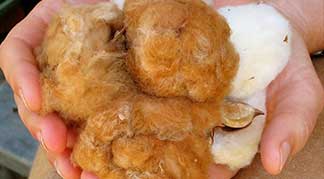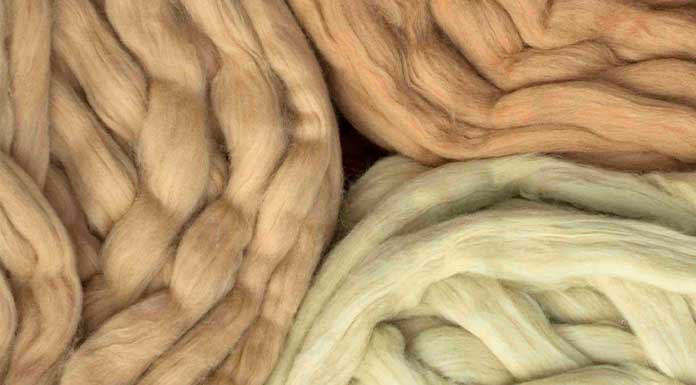
Cotton, the most common raw material of the textile industry, comes in colours outside the usual white. To increase the production of naturally coloured cotton that offers visual and functional benefits, Turkey will cultivate in 25.000 square meters area this year.
Increasing its cotton acreage and yields in the recent years, Turkey is carrying this process forward with diversification in cotton. Minister of Agriculture and Forestry Bekir Pakdemirli said that the ministry carried out research in order to develop coloured cotton. Minister Pakdemirli announced that they will produce two completely natural and coloured cotton called ‘sarı gelin’ (yellow bride) and ‘gelincik’ (poppy). Pakdemirli pointed out that fabrics can be produced by using natural and coloured cotton and without the need for dyeing.
Pakdemirli has disclosed that they shook hands with a textile company for the mass production of the coloured cotton developed by the General Directorate of Agricultural Research and Policies (TAGEM). Pakdemirli announced that the company will be producing in an area of 25.000 square meters in 2019, and that after 2020, production with a more extensive contract will be established. Minister Pakdemirli said; “2 natural coloured cottons were registered with the names of ‘sarı gelin’ (yellow bride) and ‘gelincik’ (poppy). ‘Sarı gelin’ (yellow bride) is light while ‘gelincik’ (poppy) is dark brown. The fact that it does not contain dye and is completely natural will be very interesting for textile manufacturers. We think we’ll get good results. Because it is natural, it does not have a carcinogenic effect, it is environmentally harmless, organic and important for children’s clothing”.
The advantages of naturally coloured cotton
In addition to the white cotton commonly used in the global market, naturally coloured cotton has an old history as well. It was found that naturally coloured cotton was produced in India, Pakistan, Egypt and Peru, B.C. 2700. The colour and shades of cotton vary depending on the climate and soil characteristics of the cultivation area. The most common tone is yellowish brown. In recent years several Turkish universities have carried out research and field applications on these issues. These cottons are either naturally derived from coloured seeds or produced by breeding studies of universities and institutes.
Naturally coloured cotton generally refers to brown and green cotton in different shades. The work on different colours of cotton in the laboratory environment still continues. Coloured cotton fibers then eliminate the need to dye the fabric. And thus, water, energy, chemicals used for dying and the time spent for this work have been eliminated. The elimination of the dying process prevents waste and pollution as well. This means that the cost of dyeing and finishing is reduced by half. The elimination of auxiliary chemicals is also important for the environment and human health.
When we look at the fastness values of woven or knitted fabrics with coloured cotton, it is seen that all the fastness except light fastness are the same values as white cotton. Similar good values were found in the spinning of this cotton. Coloured cotton show longer duration against colour fading due to washing. For conscious consumers, naturally coloured cotton textiles are considered value-added as a preferred product.
Turkey is conducting research on coloured cotton
The coloured cotton market, which is also known as environmentally friendly fibers, continues to grow all over the world. For this reason, important researches are carried out on seeds and fibers both in the global market and in our country. In our country, various universities and institutes have important studies in the field of coloured cotton. For example, the Nazilli Cotton Research Institute conducts actual production of coloured cotton. The patent of Nazilli DT15 type buff coloured naturally coloured cotton was obtained in 2005 by this institute. The tests performed on these cottons with Uster HVI were observed to have very successful bending and washing results.
Another point working on coloured cotton production in Turkey is Kahramanmaraş. After a long period of research, the production of coloured cotton in this region began in the early 2000s with the Eastern Mediterranean Passage Agricultural Research Station Directorate and the Kahramanmaraş University Department of Agricultural Engineering with the production of 3 different colours of cotton. Another institute that carries out studies on this subject is the Çukurova University Agricultural Engineering Department.
Total cotton production increased to 502 thousand hectares in the 2017/18 season in Turkey. The previous year, this figure decreased to 416 thousand hectares. Cultivation of cotton, which was 2 million 100 thousand tons in 2016/17 season, increased to 2 million 570 thousand tons in 2017/18 season. For the 2018/19 season, it is estimated to be around 2 million 200 thousand tons over 525 thousand hectares.

